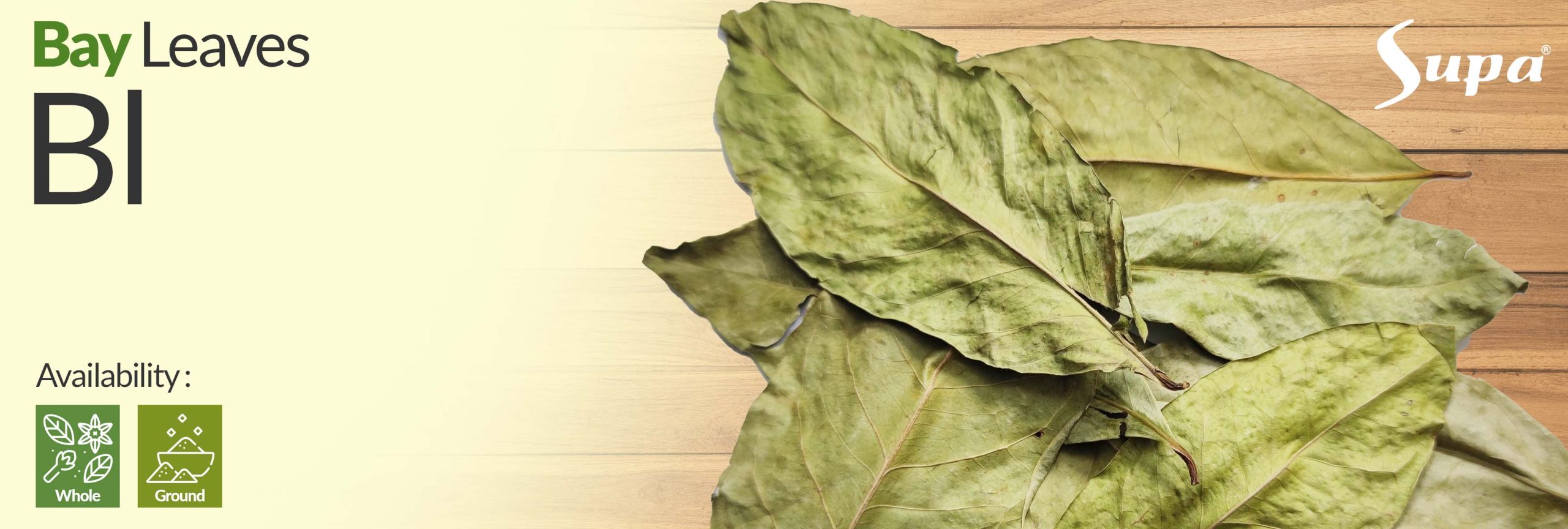
Bay leaves, derived from the evergreen bay laurel tree (Laurus nobilis), have a storied history that stretches back to ancient civilizations and continues to be a staple in culinary and cultural practices. Native to the Mediterranean region, bay leaves have been treasured for their aromatic and flavorful qualities. In ancient times, they were woven into wreaths worn by victors, symbolizing honor and achievement. The leaves’ presence in Greek and Roman mythology further underscored their significance.
Culinary uses of bay leaves date back to ancient Roman and Greek kitchens, where they were added to stews, sauces, and preserved foods for their subtle and distinctive flavor. Beyond their flavor, bay leaves were also utilized for their potential to repel insects and pests. They were placed in food storage areas to protect against infestations, highlighting their practical uses in addition to their taste-enhancing properties.
Modern culinary traditions continue to feature bay leaves in various dishes, infusing soups, stocks, and braises with their unique essence. However, it’s important to note that bay leaves are typically used as a flavoring agent and are not meant to be consumed whole due to their tough texture. With their legacy spanning cultures and centuries, bay leaves stand as a testament to the enduring allure of aromatic herbs and their integral role in both the kitchen and cultural symbolism.
Flavor: Bay leaves contribute a subtle and complex flavor to dishes. The flavor is often described as slightly floral, herbal, and slightly bitter. Bay leaves do not have an overpowering taste, but rather provide a background note that enhances the overall taste of the dish. Their flavor becomes more pronounced during cooking and infuses into the food. Taste: The taste of bay leaves is not typically intense, but it adds a mild bitterness and a hint of earthiness to dishes. The bitterness is usually well-balanced, and when used in appropriate quantities, it can help to counteract rich or fatty flavors in a dish. Aroma: Bay leaves are known for their aromatic qualities. They have a pleasant, slightly sweet aroma that is often compared to a mix of herbal, woody, and floral notes. The aroma becomes more pronounced as the leaves are heated during cooking, releasing their essential oils into the dish.
Culinary Flavoring: Bay leaves are commonly used as a culinary herb to add flavor to soups, stews, sauces, and other dishes. They have a subtle, earthy, and slightly sweet taste that can enhance the overall flavor profile of the food. Aromatherapy: The essential oils present in bay leaves release a pleasant aroma when crushed or heated. These aromas are often used in aromatherapy to promote relaxation and relieve stress. Insect Repellent: Bay leaves, especially when dried and placed in storage areas, can help repel insects and pests due to their natural oils and aroma. They are often used to deter pantry pests like moths and weevils. Medicinal Properties: Bay leaves are believed to have some medicinal properties, such as anti-inflammatory and antioxidant effects. They are sometimes used in traditional remedies to aid digestion, alleviate respiratory symptoms, and support overall health. Folklore and Superstition: In some cultures, bay leaves have been associated with folklore and superstitions. They were believed to bring good luck, protect against negative energy, and enhance psychic abilities when used in rituals or placed under pillows.
Origin : Indonesia Botanical Name : Syzygium polyanthum Composition : Bay Leaf Color : Green Moisture Content : Max 10% Shelf Life : 12 Months Loadability : 20 FCL Package : Carton Packing *For more detailed specifications, please feel free to contact us.


